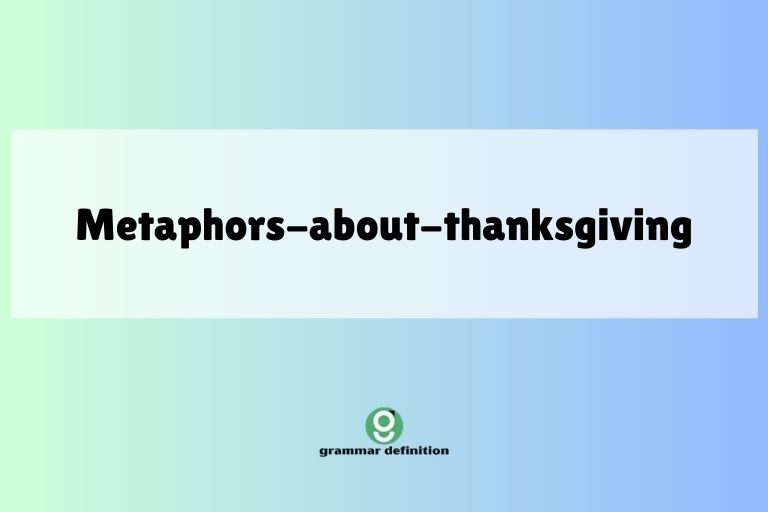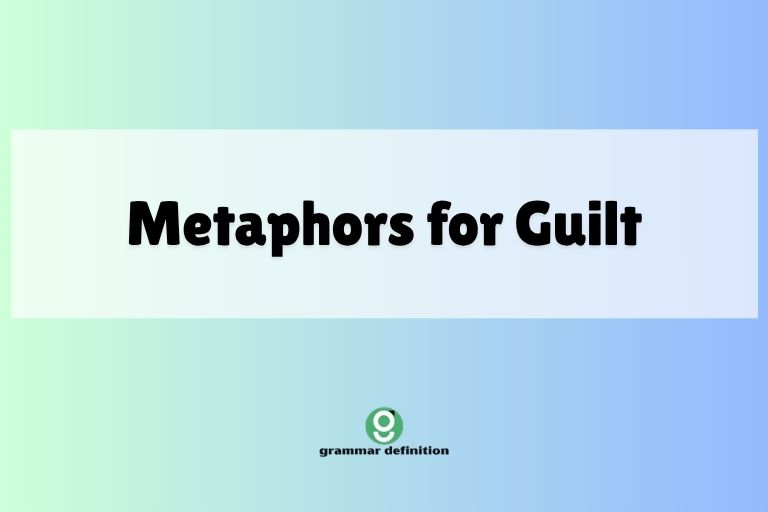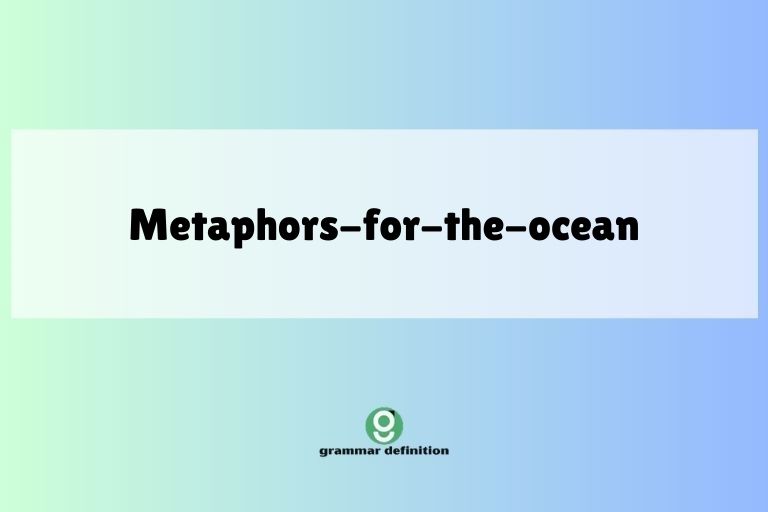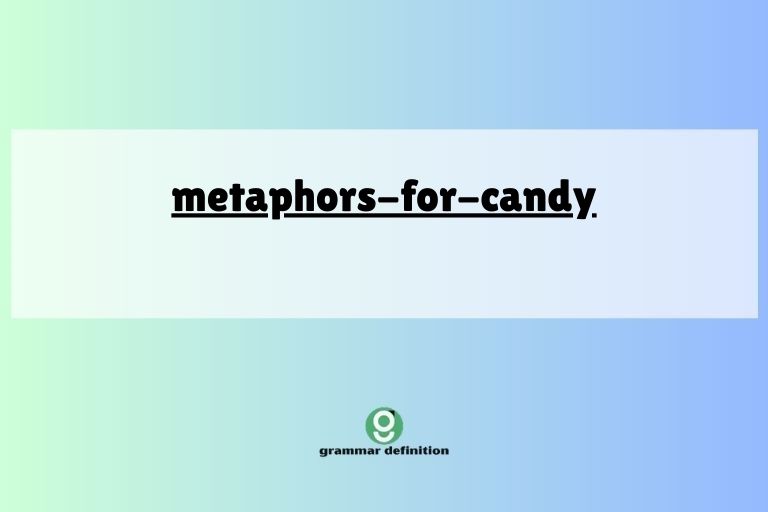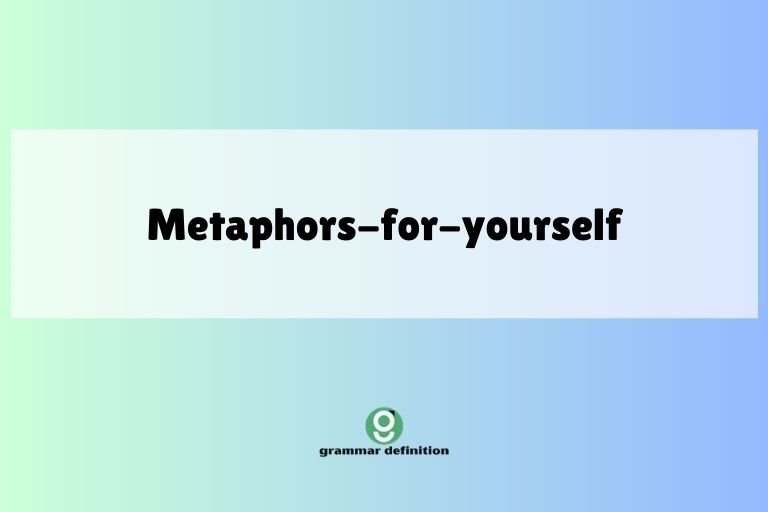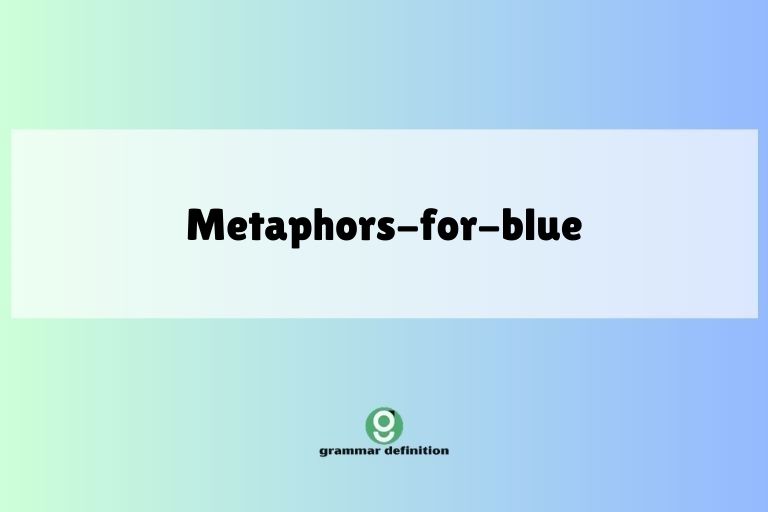Painting Feelings: Mastering Metaphors for Emotions
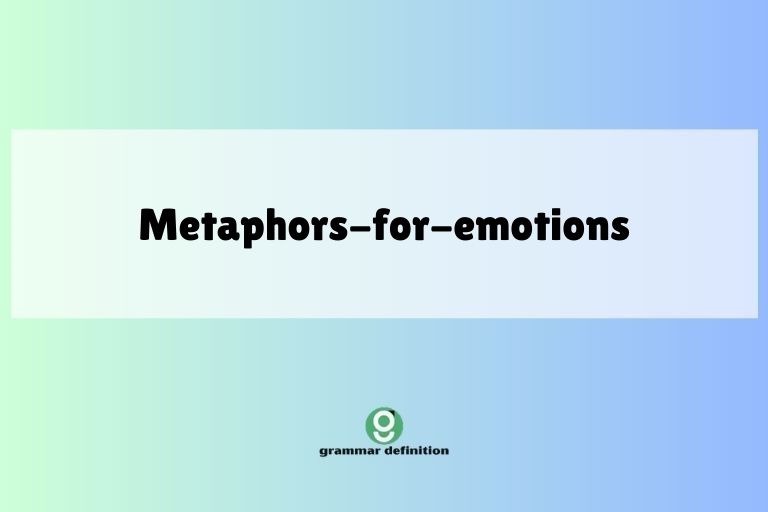
Understanding how to express emotions effectively is a cornerstone of fluent and nuanced English. Metaphors, in particular, provide a powerful tool for conveying the often-complex and abstract nature of feelings.
This article delves into the world of metaphors for emotions, exploring their structure, types, usage, and common pitfalls. Whether you are an ESL student, a writer looking to enrich your prose, or simply someone interested in the intricacies of language, this guide will equip you with the knowledge and skills to master the art of using metaphors to paint vivid emotional landscapes.
By mastering these metaphorical expressions, you can elevate your communication skills, enabling you to articulate your feelings and understand others with greater depth and precision. This exploration will enhance your comprehension and application of English grammar in creative and meaningful ways.
Get ready to unlock a new dimension of emotional expression through the power of metaphorical language!
Table of Contents
- Definition of Metaphors for Emotions
- Structural Breakdown
- Types of Metaphors for Emotions
- Examples of Metaphors for Emotions
- Usage Rules
- Common Mistakes
- Practice Exercises
- Advanced Topics
- FAQ
- Conclusion
Definition of Metaphors for Emotions
A metaphor is a figure of speech that directly compares two unrelated things, asserting that one thing *is* another to highlight a shared quality or characteristic. Unlike similes, which use “like” or “as” to make a comparison, metaphors make a direct connection.
When applied to emotions, metaphors allow us to describe abstract feelings in more concrete and relatable terms. These metaphors tap into our shared human experiences, making complex emotional states more accessible and understandable.
Metaphors for emotions function by transferring qualities from a more tangible or easily understood concept (the source domain) to the less tangible emotion (the target domain). For example, we might say someone is “boiling with anger.” Here, the physical sensation of boiling (source domain) is used to describe the intensity of anger (target domain). This allows us to grasp the feeling’s intensity and potential volatility in a more vivid way.
The use of metaphors to describe emotions is not merely decorative; it’s deeply ingrained in how we conceptualize and communicate our inner experiences. These metaphors provide a framework for understanding and sharing feelings that might otherwise be difficult to articulate.
They enrich our language and allow for more nuanced and impactful communication.
Structural Breakdown
Understanding the structure of metaphors for emotions involves identifying the source domain, the target domain, and the mapping between them. This breakdown helps to analyze how the metaphor works and why it is effective.
Source Domain
The source domain is the tangible or concrete concept that is used to describe the emotion. It is the familiar idea or experience that provides the framework for understanding the emotion.
Common source domains for emotions include:
- Physical Sensations: Hot, cold, heavy, light
- Natural Forces: Storms, fire, waves
- Containers: Full, empty, overflowing
- Colors: Blue, red, black
- Journeys: Uphill, downhill, crossroads
The choice of source domain significantly impacts the meaning and connotation of the metaphor. For instance, using “fire” as a source domain for anger suggests a destructive and uncontrollable force, while using “ice” suggests a cold and detached anger.
Target Domain
The target domain is the emotion itself that is being described. This is the abstract feeling that is made more understandable through the metaphor.
Common target domains include:
- Happiness: Joy, contentment, elation
- Sadness: Grief, sorrow, melancholy
- Anger: Rage, frustration, irritation
- Fear: Anxiety, dread, terror
- Love: Affection, passion, adoration
The target domain is often more difficult to articulate directly, which is why metaphors are so useful. By mapping the characteristics of the source domain onto the target domain, we can create a more vivid and relatable picture of the emotion.
Mapping
Mapping is the process of connecting the features of the source domain to the features of the target domain. It involves identifying the similarities and relationships between the two concepts.
For example, in the metaphor “He was drowning in sorrow,” the mapping is as follows:
- Source Domain: Drowning
- Target Domain: Sorrow
- Mapping: The feeling of being overwhelmed and unable to breathe in water (drowning) is mapped onto the feeling of being overwhelmed and unable to cope with sorrow.
Effective mapping relies on shared cultural and physical experiences. The more resonant the connection between the source and target domains, the more powerful the metaphor will be.
Understanding the mapping process allows us to analyze and appreciate the nuances of metaphorical language.
Types of Metaphors for Emotions
Metaphors for emotions can be categorized based on the type of source domain they draw from. Each category offers a unique way of understanding and expressing feelings.
Physical Sensations
These metaphors use physical sensations like temperature, weight, or pressure to describe emotions. They tap into our bodily experiences to make abstract feelings more concrete.
Examples include: “He was burning with jealousy,” “She felt the weight of sadness,” and “His words were like a cold shower.” These metaphors connect emotions to tangible physical experiences, making them more relatable.
Natural Forces
Metaphors that use natural forces like storms, fire, or earthquakes convey the intensity and power of emotions. They often suggest a lack of control or a sense of being overwhelmed.
Examples include: “A wave of grief washed over her,” “His anger erupted like a volcano,” and “She weathered the storm of her emotions.” These metaphors highlight the overwhelming and sometimes destructive nature of intense feelings.
Containers
Container metaphors describe emotions as being held within a container, such as a heart, a mind, or a body. These metaphors often focus on the capacity and limits of emotional experience.
Examples include: “Her heart was full of joy,” “He couldn’t contain his excitement,” and “She bottled up her anger.” These metaphors emphasize the idea that emotions can be contained, released, or suppressed.
Colors
Color metaphors use colors to represent emotions, drawing on the symbolic associations that different colors have acquired over time. These metaphors are often culturally specific.
Examples include: “She was feeling blue,” “He saw red,” and “She was green with envy.” These metaphors rely on the widely understood symbolism of colors to convey emotional states.
Journeys
Journey metaphors describe emotional experiences as a journey, with its ups and downs, challenges, and destinations. These metaphors often focus on the process of emotional growth and change.
Examples include: “He was on an emotional rollercoaster,” “She had come a long way in her healing process,” and “He was at a crossroads in his life.” These metaphors highlight the dynamic and transformative nature of emotional experiences.
Examples of Metaphors for Emotions
The following tables provide extensive examples of metaphors for emotions, organized by category. Each example illustrates how the source domain is used to describe the target domain.
Physical Sensations Examples
This table showcases how physical sensations are used metaphorically to describe various emotions. Note the direct connection between the tangible sensation and the abstract feeling.
| Emotion | Metaphor | Explanation |
|---|---|---|
| Anger | He was boiling with rage. | The sensation of boiling represents the intense heat and pressure of anger. |
| Sadness | She felt a heavy weight in her chest. | The feeling of weight symbolizes the burden and oppressiveness of sadness. |
| Fear | A cold shiver ran down his spine. | The sensation of a cold shiver represents the sudden and unsettling nature of fear. |
| Happiness | She felt light as a feather. | The feeling of lightness symbolizes the joy and freedom of happiness. |
| Anxiety | His stomach was in knots. | The sensation of knots represents the tension and unease of anxiety. |
| Love | Her heart felt warm. | Warmth symbolizes the comfort and affection of love. |
| Jealousy | A bitter taste filled his mouth. | A bitter taste symbolizes the unpleasantness and resentment of jealousy. |
| Excitement | She was buzzing with anticipation. | Buzzing symbolizes the energetic and restless feeling of excitement. |
| Disappointment | His hopes were dashed. | Dashed symbolizes the feeling of something being broken and ruined |
| Embarrassment | Her face burned with shame. | Burning sensation symbolizes the intense feeling of discomfort and humiliation. |
| Surprise | She was stunned into silence. | The sensation of being stunned symbolizes the shock and disbelief of surprise. |
| Grief | A sharp pain pierced her heart. | The sensation of a sharp pain symbolizes the acute suffering of grief. |
| Hope | A warm glow filled her. | The sensation of a warm glow symbolizes the comforting and encouraging feeling of hope. |
| Regret | A nagging ache persisted in his mind. | The sensation of a nagging ache symbolizes the persistent and uncomfortable feeling of regret. |
| Guilt | He felt a crushing burden on his shoulders. | The sensation of a crushing burden symbolizes the weight of guilt and responsibility. |
| Longing | Her heart ached for his return. | The sensation of aching symbolizes the deep desire and yearning of longing. |
| Contentment | She felt a gentle warmth spread through her. | The sensation of gentle warmth symbolizes the peaceful and satisfying feeling of contentment. |
| Resentment | A knot of bitterness tightened in his stomach. | The sensation of a knot tightening symbolizes the growing and unpleasant feeling of resentment. |
| Relief | A weight lifted from her shoulders. | The sensation of a weight lifting symbolizes the easing of burden and stress of relief. |
| Disgust | A foul taste lingered in his mouth. | The sensation of a foul taste symbolizes the revulsion and aversion of disgust. |
| Nostalgia | A bittersweet pang resonated in her chest. | The sensation of a bittersweet pang symbolizes the mixed emotions of longing and sadness associated with nostalgia. |
| Awe | She felt a tingling sensation from head to toe. | The sensation of tingling symbolizes the overwhelming and inspiring feeling of awe. |
| Pity | A heavy heart weighed down his spirit. | The sensation of a heavy heart symbolizes the sorrow and compassion associated with pity. |
Natural Forces Examples
This table illustrates how natural forces like storms, fire, and tides are used metaphorically to convey the intensity and impact of emotions.
| Emotion | Metaphor | Explanation |
|---|---|---|
| Anger | His anger erupted like a volcano. | The forceful eruption of a volcano represents the sudden and uncontrollable outburst of anger. |
| Sadness | A wave of grief washed over her. | The overwhelming force of a wave symbolizes the all-encompassing nature of grief. |
| Fear | He was paralyzed by a tidal wave of fear. | The immense power of a tidal wave represents the overwhelming and immobilizing nature of fear. |
| Happiness | Her joy flowed like a river. | The continuous and abundant flow of a river symbolizes the constant and overflowing nature of joy. |
| Love | Their love was a burning flame. | The intense heat and light of a flame symbolize the passion and intensity of love. |
| Anxiety | He was caught in a whirlwind of worry. | The chaotic and disorienting nature of a whirlwind represents the swirling and overwhelming nature of worry. |
| Despair | She was lost in a sea of despair. | The vast and boundless nature of the sea symbolizes the overwhelming and isolating nature of despair. |
| Hope | A flicker of hope ignited in her heart. | The small and fragile nature of a flicker represents the initial and delicate nature of hope. |
| Frustration | He was battling against a headwind of frustration. | The resistance of a headwind symbolizes the obstacles and difficulties causing frustration. |
| Resentment | His resentment smoldered like a slow-burning fire. | The slow and persistent burning of a fire symbolizes the lingering and destructive nature of resentment. |
| Grief | The storm of grief raged within him. | The intensity and destructiveness of a storm represent the overwhelming nature of grief. |
| Relief | The clouds of anxiety parted, revealing a ray of sunshine. | The clearing of clouds and the appearance of sunshine symbolize the lifting of burden and the return of hope in relief. |
| Passion | Their passion blazed like a wildfire. | The uncontrollable and rapidly spreading nature of a wildfire symbolizes the intense and consuming nature of passion. |
| Serenity | She found peace in the gentle rhythm of the waves. | The calming and consistent rhythm of waves symbolizes the tranquility and balance of serenity. |
| Loneliness | He felt like a lone tree standing against a fierce wind. | The isolation and vulnerability of a lone tree symbolize the feeling of being alone and exposed in loneliness. |
| Determination | She stood firm like a mountain in the face of adversity. | The steadfastness and resilience of a mountain symbolize the unwavering resolve of determination. |
| Insecurity | His confidence crumbled like sand in the wind. | The fragility and impermanence of sand symbolize the easily shaken nature of insecurity. |
| Vulnerability | She felt exposed like a flower in a hailstorm. | The delicate and defenseless nature of a flower symbolizes the susceptibility to harm in vulnerability. |
| Regret | The echoes of his past mistakes reverberated like thunder. | The loud and lingering sound of thunder symbolizes the persistent and unavoidable nature of regret. |
| Acceptance | She let go and allowed her emotions to flow like a stream. | The natural and unresisted flow of a stream symbolizes the willingness to embrace emotions in acceptance. |
| Enthusiasm | His enthusiasm surged like a powerful waterfall. | The forceful and abundant flow of a waterfall symbolizes the overwhelming and energetic nature of enthusiasm. |
| Patience | She waited with the quiet strength of a deep-rooted tree. | The stability and endurance of a deep-rooted tree symbolize the calm and steadfast quality of patience. |
| Ambition | His ambition soared like an eagle taking flight. | The upward and determined flight of an eagle symbolizes the aspirational and driven nature of ambition. |
Container Examples
This table presents examples of how containers are used metaphorically to describe emotions, focusing on concepts like fullness, emptiness, and containment.
| Emotion | Metaphor | Explanation |
|---|---|---|
| Happiness | Her heart was full of joy. | The container (heart) is filled to capacity with the emotion (joy). |
| Anger | He couldn’t contain his anger. | The emotion (anger) is trying to escape from the container (himself). |
| Sadness | She bottled up her sadness. | The emotion (sadness) is being suppressed within the container (herself). |
| Fear | His mind was flooded with fear. | The container (mind) is overwhelmed with the emotion (fear). |
| Love | Her heart overflowed with love. | The container (heart) has more of the emotion (love) than it can hold. |
| Hope | A reservoir of hope sustained her through the difficult times. | The container (reservoir) holds a supply of the emotion (hope) that provides strength and support. |
| Despair | He felt empty inside. | The container (himself) lacks the emotion (happiness, hope). |
| Anxiety | Her mind was a pressure cooker of anxiety. | The container (mind) is building up intense pressure due to the emotion (anxiety). |
| Jealousy | His heart was poisoned with jealousy. | The container (heart) is contaminated with the negative emotion (jealousy). |
| Contentment | She held a treasure of contentment within her soul. | The container (soul) holds something precious (contentment). |
| Grief | His soul was a vessel overflowing with sorrow. | The container (soul) is overwhelmed with the emotion (sorrow). |
| Regret | He carried a burden of regret in his heart. | The container (heart) holds the emotion (regret) like a heavy load. |
| Excitement | She felt like a balloon about to burst with excitement. | The container (herself) is filled to the point of breaking with the emotion (excitement). |
| Frustration | He felt trapped in a box of frustration. | The container (box) confines and limits him due to the emotion (frustration). |
| Emptiness | Her life felt like a hollow shell. | The container (life) lacks substance and meaning. |
| Resentment | He harbored a well of resentment deep inside. | The container (himself) holds a large amount of the negative emotion (resentment). |
| Relief | She released the dam of pent-up emotions. | The container (dam) is opened to allow the release of emotions. |
| Longing | Her heart was a void that only his presence could fill. | The container (heart) has a lack that needs to be satisfied. |
| Bitterness | A reservoir of bitterness had accumulated in his soul. | The container (soul) has collected a large amount of the negative emotion (bitterness). |
| Yearning | Her soul was a vessel yearning to be filled with love. | The container (soul) strongly desires to be filled with the emotion (love). |
| Vulnerability | She felt like an open book, her emotions laid bare for all to see. | The container (book) exposes her emotions without protection. |
| Inner Turmoil | His mind was a battlefield of conflicting emotions. | The container (mind) is the site of intense and ongoing conflict. |
| Emotional Strength | She possessed an inner fortress of resilience. | The container (fortress) provides protection and strength during emotional challenges. |
Color Examples
This table demonstrates how colors are used metaphorically to represent emotions, drawing on their commonly understood symbolic associations.
| Emotion | Metaphor | Explanation |
|---|---|---|
| Sadness | She was feeling blue. | Blue is associated with sadness and melancholy. |
| Anger | He saw red. | Red is associated with anger, rage, and aggression. |
| Envy | She was green with envy. | Green is associated with jealousy and envy. |
| Fear | He was white as a sheet. | White is associated with paleness, shock, and fear. |
| Optimism | She painted a rosy picture of the future. | Rosy (pink) is associated with optimism, hope, and positivity. |
| Innocence | He was as pure as the driven snow. | White (like snow) is associated with purity and innocence. |
| Gloom | The day felt gray and heavy. | Gray is associated with sadness, gloom, and depression. |
| Jealousy | Her heart turned black with jealousy. | Black is associated with darkness, negativity, and intense jealousy. |
| Excitement | The city was bathed in golden light. | Golden is associated with joy, excitement, and celebration. |
| Tranquility | The sky was a serene blue. | Blue is associated with calmness, peace, and tranquility. |
| Disappointment | Her dreams faded to gray. | Gray symbolizes the dullness and loss of vibrancy in disappointment. |
| Mystery | The situation was shrouded in a veil of gray. | Gray represents the ambiguity and uncertainty surrounding the situation. |
| Passion | Their love was a scarlet flame. | Scarlet, a vibrant red, symbolizes intense passion and desire. |
| Hope | She saw a silver lining in every cloud. | Silver represents the glimmer of hope in difficult situations. |
| Purity | Her intentions were as white as snow. | White symbolizes the absence of malice and the presence of pure intentions. |
| Despair | He felt like he was trapped in a black hole of despair. | Black symbolizes the absence of light and the overwhelming feeling of despair. |
| Energy | The room buzzed with electric blue energy. | Electric blue symbolizes high energy levels and excitement. |
| Peace | She found solace in the lavender fields. | Lavender symbolizes tranquility and peace of mind. |
| Contemplation | He was lost in a sea of deep indigo thoughts. | Indigo symbolizes introspection and profound contemplation. |
| Optimism | She had a sunny disposition. | Sunny, like the color yellow, symbolizes cheerfulness and optimism. |
| Anxiety | A yellow streak of anxiety ran through him. | Yellow, when used negatively, can symbolize anxiety and cowardice. |
| Warmth | The room glowed with amber light, filling them with warmth. | Amber symbolizes comfort, warmth, and relaxation. |
| Royalty | She carried herself with regal purple grace. | Purple symbolizes royalty, sophistication, and dignity. |
Journey Examples
This table provides examples of how journey metaphors are used to describe emotional experiences, focusing on the process of change and growth.
| Emotion | Metaphor | Explanation |
|---|---|---|
| Healing | She was on a journey of healing. | Healing is portrayed as a process with steps and progress. |
| Life’s Challenges | Life is a rollercoaster. | Life is portrayed as having ups and downs, excitement and fear. |
| Growth | He had come a long way. | Personal development is portrayed as distance traveled. |
| Decision-Making | She was at a crossroads. | Making a decision is portrayed as choosing a path. |
| Overcoming Obstacles | He navigated the rough waters of grief. | Emotional struggles are portrayed as difficult terrain. |
| Personal Development | She embarked on a path of self-discovery. | The journey represents a deliberate effort to understand oneself better. |
| Facing Adversity | He climbed the mountain of despair. | Overcoming challenges is portrayed as ascending a difficult peak. |
| Progress | She was making strides towards recovery. | Improvement is portrayed as steps forward. |
| Setbacks | He stumbled along the road to success. | Difficulties are portrayed as missteps on a path. |
| Change | She was on the threshold of a new beginning. | Transition is portrayed as crossing a boundary. |
| Resilience | He bounced back from every setback. | The ability to recover is portrayed as rebounding from a fall. |
| Guidance | She followed her heart’s compass. | Intuition is portrayed as a tool for navigation. |
| Lost | He felt adrift in a sea of uncertainty. | Confusion is portrayed as being without direction. |
| Purpose | She found her true calling. | Discovering one’s passion is portrayed as finding a destination. |
| Transformation | He emerged from the experience a changed man. | Personal growth is portrayed as a metamorphosis. |
| Challenges | The road ahead was fraught with obstacles. | Difficulties are portrayed as hazards on a path. |
| Perseverance | He stayed the course despite the difficulties. | Determination is portrayed as maintaining direction. |
| Growth | She blossomed into a confident woman. | Personal development is portrayed as flowering. |
| Inspiration | He stumbled upon a wellspring of creativity. | Discovering new ideas is portrayed as finding a source of water. |
| Clarity | The fog lifted, revealing the path forward. | Gaining understanding is portrayed as improved visibility. |
| Emotional Turmoil | He was lost in the labyrinth of his own mind. | Complex and confusing thoughts are portrayed as a maze. |
| Self-Discovery | She peeled back the layers of her identity. | Understanding oneself is portrayed as removing coverings. |
| Moving On | He turned the page and started a new chapter. | Leaving the past behind is portrayed as beginning a new story. |
Usage Rules
Using metaphors effectively requires careful consideration of context, audience, and consistency. Avoiding clichés and ensuring clarity are also crucial for impactful communication.
Context and Audience
The effectiveness of a metaphor depends heavily on the context in which it is used and the audience to whom it is addressed. A metaphor that resonates with one audience might be confusing or inappropriate for another.
Consider the following:
- Cultural Background: Some metaphors are culturally specific and might not be understood by people from different backgrounds.
- Level of Understanding: Use simpler metaphors for audiences with limited English proficiency and more complex metaphors for advanced learners.
- Formality: Avoid overly informal or slang-based metaphors in formal settings.
Always tailor your metaphors to suit the specific situation and the people you are communicating with. Understanding your audience is key to ensuring that your metaphors are effective and well-received.
Consistency
Maintaining consistency within a metaphor is essential for clarity and coherence. Avoid mixing metaphors or creating contradictory images.
For example, if you start by describing anger as a fire, don’t suddenly switch to describing it as a wave.
Inconsistent metaphors can confuse your audience and undermine the impact of your message. Choose your metaphors carefully and stick with them throughout your communication.
Consistency enhances the overall effectiveness of your metaphorical language.
Avoiding Clichés
Cliches are overused metaphors that have lost their impact due to repetition. While they might be easily understood, they lack originality and can make your writing seem uninspired.
Examples of clichéd metaphors for emotions include:
- “Feeling blue”
- “Seeing red”
- “Heart of gold”
Strive to create fresh and original metaphors that offer a unique perspective on emotions. This will make your writing more engaging and memorable.
Avoiding clichés demonstrates creativity and thoughtfulness in your use of language.
Common Mistakes
One common mistake is mixing metaphors, which can lead to confusion and a lack of clarity. For example:
- Incorrect: “He was drowning in a sea of anger, but he decided to nip it in the bud.” (Mixing drowning and nipping in the bud)
- Correct: “He was drowning in a sea of anger, overwhelmed by its intensity.”
- Correct: “He felt a surge of anger and decided to nip it in the bud before it escalated.”
Another mistake is using metaphors that don’t logically connect to the emotion being described. The connection between the source and target domains should be clear and resonant.
- Incorrect: “She was feeling like a skyscraper.” (Unclear connection to an emotion)
- Correct: “She felt tall and proud, like a skyscraper.” (Clearer connection to pride)
Finally, using metaphors that are too abstract or obscure can also hinder understanding. Metaphors should be relatable and grounded in common experiences.
- Incorrect: “His sadness was a fractal dimension.” (Too abstract)
- Correct: “His sadness was a deep and endless well.” (More relatable)
Practice Exercises
Test your understanding of metaphors for emotions with these practice exercises.

